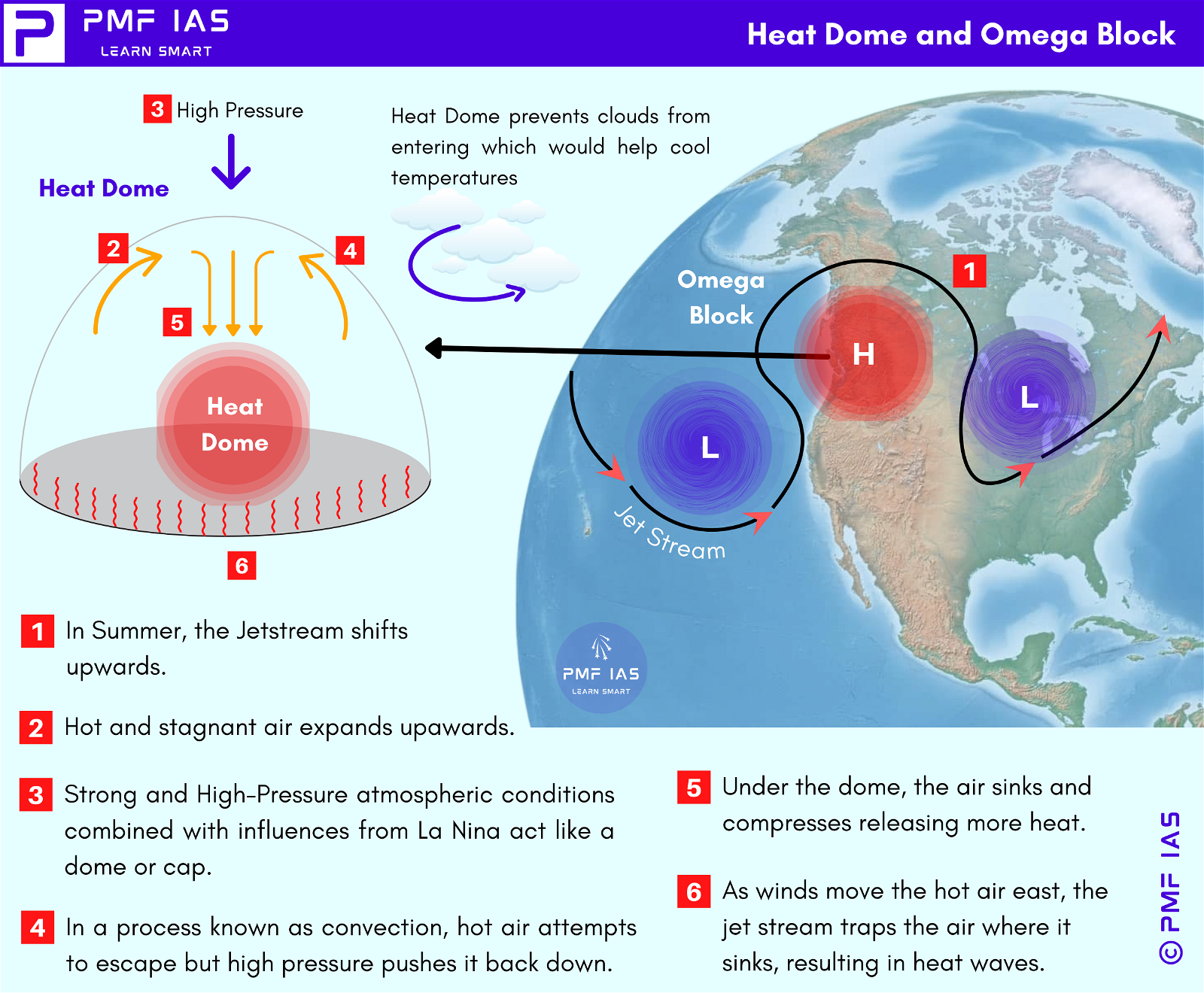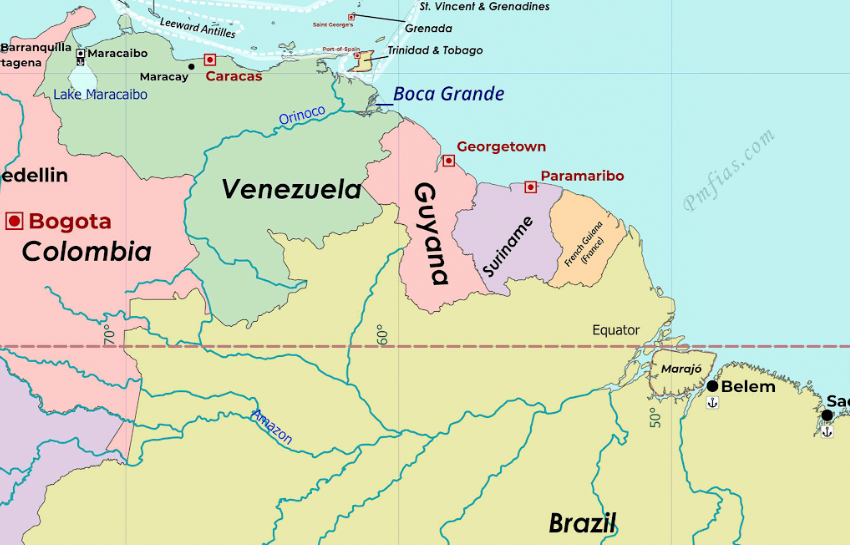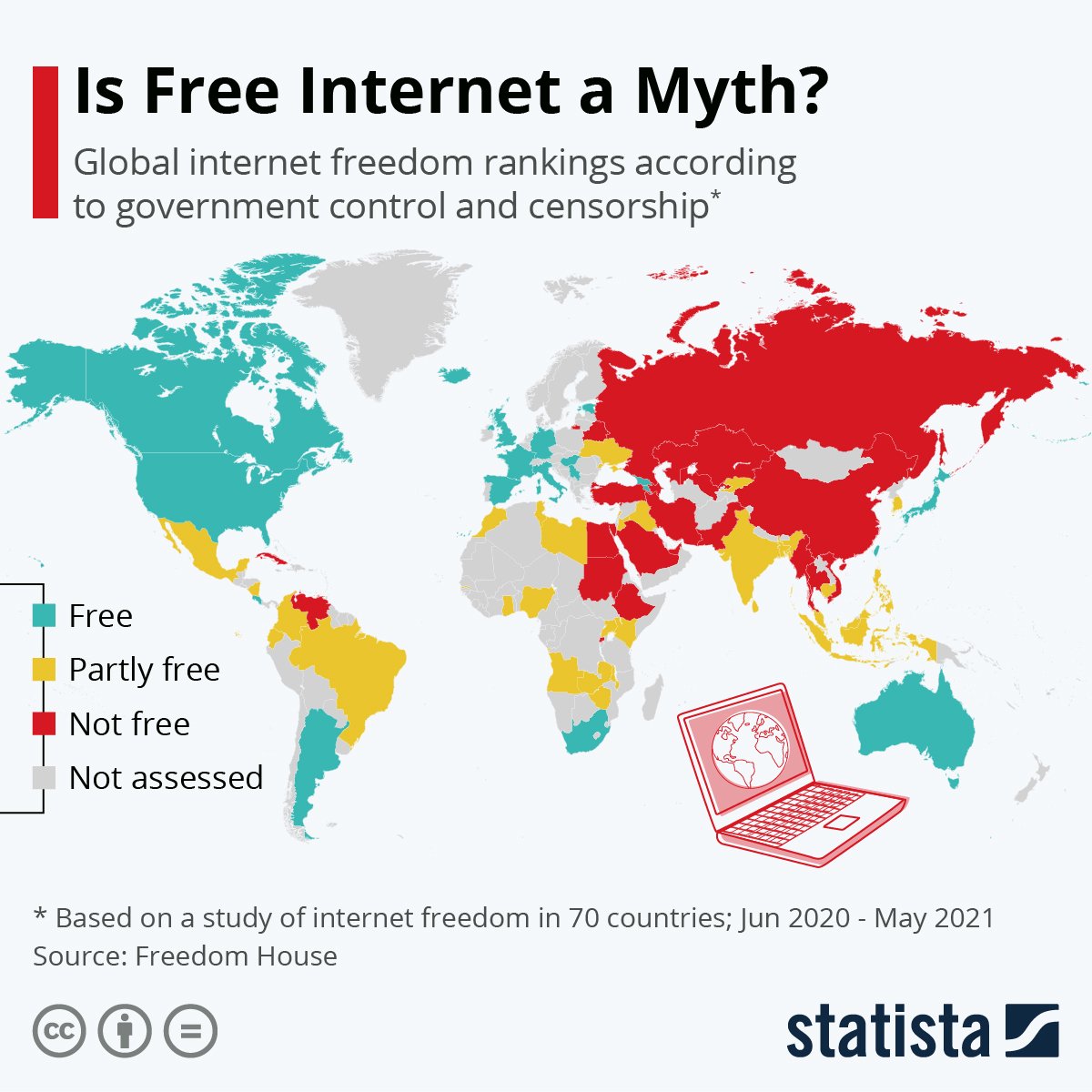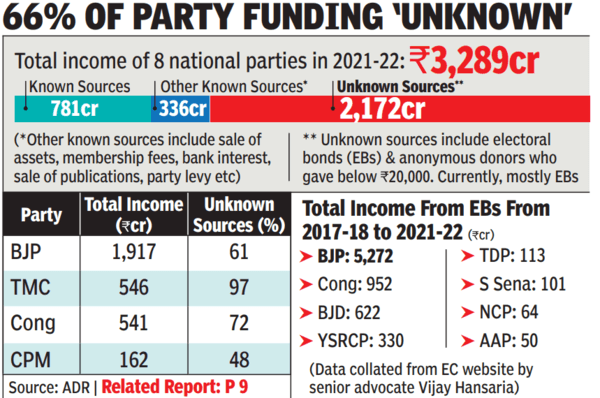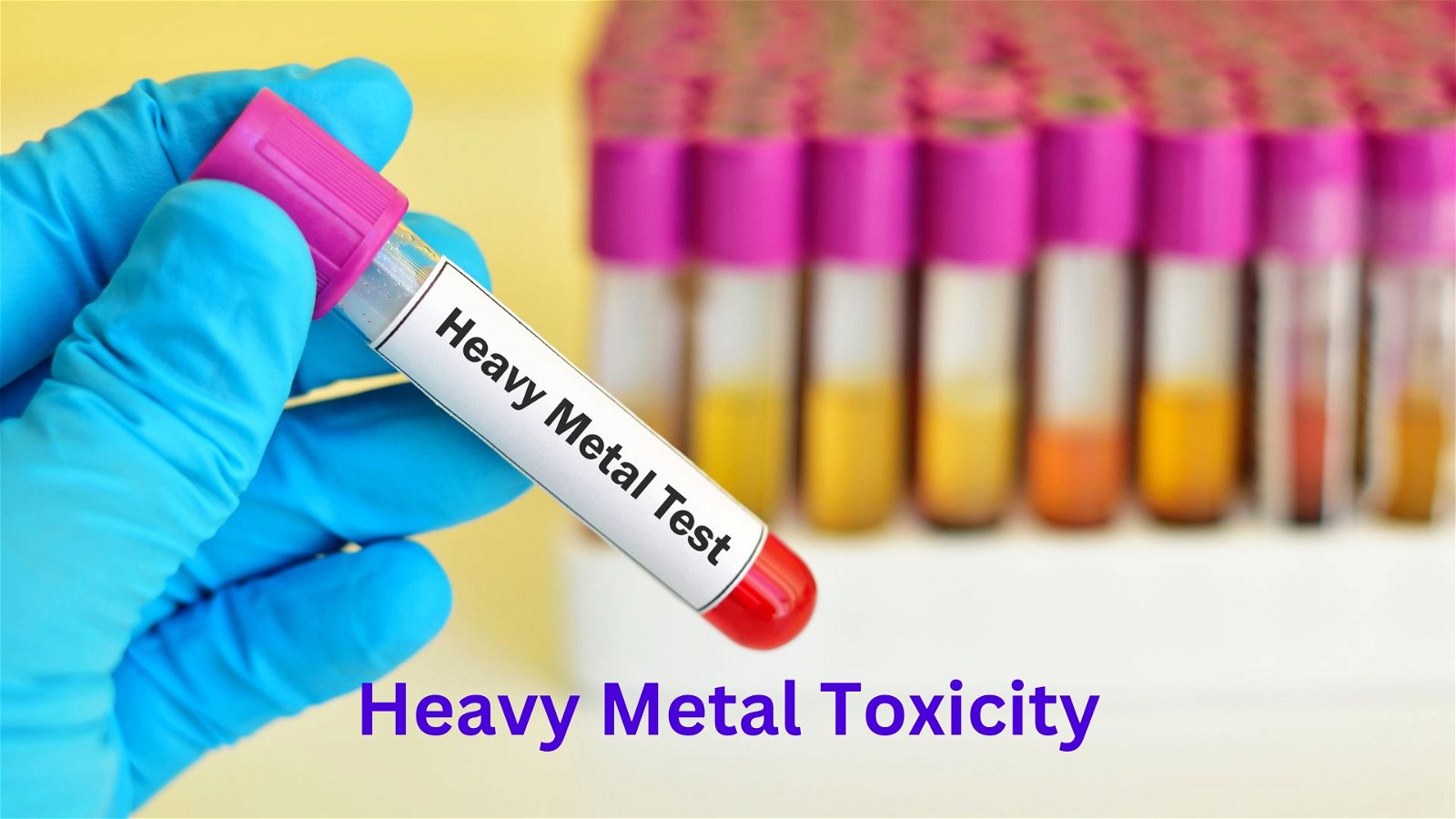
Current Affairs September 15, 2023: Anti Defection, Medicane, Digital Registration of Births and Deaths, One Health Approach, Ayushman Bhav Campaign, Ayushman Bharat, One Week One Lab Campaign, Skill India, OIML certificates, Libyan floods
Subscribers of "Current Affairs" course can Download Daily Current Affairs in PDF/DOC
Subscribe to Never Miss an Important Update! Assured Discounts on New Products!
Must Join PMF IAS Telegram Channel & PMF IAS History Telegram Channel
{GS1 – Geo – PG – Climatology – 2023/09/15} Medicane
- Context (TH): Torrential rains by medicane Daniel caused the devastating flood in Derna, Libya.
- Medicanes (Mediterranean Hurricanes; extra tropical cyclones in the Mediterranean) are tropical-like cyclones in the Mediterranean Sea.
Characteristics of Medicane
- Formation: Medicanes usually form during autumn and winter months when sea surface temperatures (SST) in the Mediterranean are relatively warm.
- Frequency: The Mediterranean is a dry, evaporative sea, and cyclonic storms do not grow as much. Medicanes are therefore, relatively rare, about once or twice per year.
- Intensity: Medicanes are known to be weak storms that do not last long. But unusually warm SSTs can make them strong storms that lasts long.
- Cold waters: Medicanes occur more in colder waters than tropical cyclones. Hence, the cores of these storms are colder, as compared to the warm cores of tropical cyclones.
- Shape: Like tropical storms, medicanes have a symmetric structure, a warm core (relatively colder than the tropical cyclones), a clearly visible eye, and winds of at least tropical-storm strength.
- Size: Medicanes are typically smaller in diameter and have lower wind speeds than tropical cyclones.
Climate Change and Medicanes
- In the past few decades, the number of medicanes has been increasing due to the warming of the Mediterranean Sea, making medicanes more frequent and stronger.
{GS2 – Governance – Misc – 2023/09/15} Digital Registration of Births and Deaths
- Context (TH I HT): Digital birth certificates to be a single document for admission to educational institutions, applications for driving licences, government jobs, passports or Aadhaar, etc.
- A government notification has declared that Starting from October 1, all reported births and deaths across the country will be digitally registered on the Centre’s portal, marking a significant step forward in modernising the nation’s record-keeping processes.
- This transformation is made possible through the Registration of Births and Deaths (Amendment) Act, 2023, which will officially take effect on the same date.
Key highlights of this digital transformation
- Centralized Database: Data centralisation will lead to updates in the National Population Register (NPR), ration cards, property registrations, and electoral rolls.
- Mandatory State Participation: States must register all births and deaths on the Centre’s Civil Registration System (CRS) portal and share this data with the Registrar-General and Census Commissioner under the Union Home Ministry.
- Collection of Aadhaar Numbers: The Act grants the government the authority to collect Aadhaar numbers from parents and informants, if available, during birth registrations.
|
{GS2 – Health – Initiative – 2023/09/15} One Health Approach
- Context (TH | PIB): GoI and the World Organization for Animal Health (WOAH) collaborate to strengthen the One Health approach for pandemic preparedness.
- The COVID-19 pandemic has deepened appreciation of the One Health concept.
- One Health is an integrated, unifying approach that aims to sustainably balance and optimise the health of people, animals, and ecosystems.
- It recognises that the health of humans, domestic and wild animals, plants, and the environment are closely linked and interdependent.

Reasons Why the One Health Approach Became More Important
- Increase in Zoonotic Diseases: It is becoming a concern for global health. E.g., Nipah, COVID-19 etc.
- 60% of pathogens that cause human diseases originate from domestic animals or wildlife.
- 75% of emerging infectious human diseases have an animal origin.
- 80% of pathogens that are of bioterrorism concern originate in animals.
- Threat to Food Security: More than 20% of global animal production loss is due to animal diseases.
- Environmental Degradation: Human actions have severely altered 75% of terrestrial environments and 66% of marine environments.
- Humans and their livestock are more likely to encounter wildlife due to these disruptions.
- Some of these contacts may increase the likelihood of disease transmission.
- Increase in Pollution: The environment deteriorated by pollution affects human and animal health.
- Increase in Trade and Tourism: Due to the increase in human movements chances of transmission of diseases have increased.
- Threat of Antimicrobial Resistance (AMR): It is the ability of microorganisms to resist the effects of antimicrobial drugs, such as antibiotics.
- Climate Change: Climate change has contributed to the increase of pathogens and disease vectors.
|
One Health Joint Plan of Action (OH JPA)
- OH JPA was launched by FAO, UNEP, WHO, & the World Organisation for Animal Health (WOAH).
- This first joint plan on One Health is a 5-year plan launched in 2022.
- It aims to create a framework to strengthen collaboration, communication, capacity building, and coordination across all sectors responsible for addressing health concerns at the human-animal-plant-environment interface.

Focus Areas of OH JPA
- One Health capacity for health systems
- Emerging and re-emerging zoonotic epidemics
- Endemic zoonotic
- Neglected tropical and vector-borne diseases
- Antimicrobial resistance and the environment
- Food safety risks
Food and Agriculture Organization (FAO)
United Nations Environment Programme (UNEP)
World Health Organization (WHO)
World Organisation for Animal Health (WOAH)
|
{GS2 – MoHFW – Initiatives – 2023/09/15} Ayushman Bhav Campaign
- Context (TH): The Ayushman Bhav Campaign, initiated by the Ministry of Health and Family Welfare (MoHFW), aims to deliver healthcare services to the last mile and consolidate access and affordability for underserved populations.
Key Objectives of the Ayushman Bhav Campaign
- Facilitating Access to Ayushman Cards: These cards are instrumental in granting beneficiaries access to healthcare services and financial protection during medical emergencies.
- Generating ABHA IDs: These are central to efficiently managing healthcare services and ensuring that individuals receive the necessary medical attention.
- Raising Awareness: The Ayushman Bhav Campaign strongly emphasises raising awareness among the population about critical health schemes and disease conditions. It includes educating people about diseases and other health-related issues, promoting preventive measures and early detection.
Three Integral Components of Ayushman Bhav
- Ayushman – Apke Dwar 3.0: It brings healthcare services directly to people’s doorsteps and eliminates barriers to healthcare access by providing services and information right in the community.
- Ayushman Melas at Health and Wellness Centres (HWC) and Community Health Clinics (CHC): They serve as platforms for healthcare professionals to interact with the community, provide essential medical services, and disseminate health-related information.
- Ayushman Sabhas in Every Village and Panchayat: They serve as forums for discussing healthcare issues, raising awareness, promoting health and well-being, and increasing community participation.
{GS2 – MoHFW – Schemes – 2023/09/15} Ayushman Bharat
- Ayushman Bharat, a flagship scheme of the GoI, was launched as the National Health Policy 2017 recommended to achieve the vision of Universal Health Coverage (UHC).
- It aims to meet Sustainable Development Goal 3 (SDG 3): Good Health and Well-Being – “Ensure healthy lives and promote well-being for all ages.”
- It attempts to move from a sectoral and segmented approach to health service delivery to a comprehensive need-based health care service.
- This scheme aims to holistically address the healthcare system (covering prevention, promotion, and ambulatory care) at the primary, secondary, and tertiary levels.
- Ayushman Bharat comprises two inter-related components, which are:
- Health and Wellness Centres (HWCs)
- Pradhan Mantri Jan Arogya Yojana (PM-JAY)
Health and Wellness Centres (HWCs)
- In 2018, the GoI announced the creation of 1,50,000 Health and Wellness Centres (HWCs) by transforming the existing Sub Centres and Primary Health Centres.
- HWCs are envisaged to deliver an expanded range of Comprehensive Primary Health Care needs of the entire population in their area, expanding access, universality, and equity close to the community.
- They cover maternal and child health services and non-communicable diseases, including free essential drugs and diagnostic services.
Pradhan Mantri Jan Arogya Yojana (PM-JAY)
- PM-JAY is the largest health assurance scheme in the world.
- It is one significant step towards achieving Universal Health Coverage (UHC) and SDG3.
- The National Health Authority (MoHFW) implements it.
- PM-JAY aims to provide a health cover of Rs. 5 lakhs per family per year to over 10 crore poor and vulnerable families that comprise the bottom 40% of the Indian population.
- The households included are based on the deprivation and occupational criteria of the Socio-Economic Caste Census 2011 (SECC 2011) for rural and urban areas, respectively.
Benefits
- It covers almost all secondary care and most tertiary care procedures.
- There is no restriction on the family size, age or gender.
- Benefits of the scheme are portable across the country (a beneficiary can visit any empanelled public or private hospital in India to avail cashless treatment).
- It covers up to three days of pre-hospitalization & fifteen days of post-hospitalization expenses.
- A defined transport allowance per hospitalisation is included in this.
{GS2 – MoLJ – Initiatives – 2023/09/15} NJDG
- Context (TH | PIB): SC integrates with the National Judicial Data Grid (NJDG) platform.
- NJDG is an online platform under the e-Courts Project, a Centrally Sponsored Scheme.
- It is a database of orders, judgments and case details of all HCs and computerised District and subordinate Courts. Data is updated near real-time by the connected District and Taluka courts.
- With the Supreme Court of India onboarding the NJDG portal, we now have all three tiers of the Indian judiciary on the NJDG portal.
|
Importance of NJDG
- It works as a monitoring tool to identify, manage, and reduce pendency of cases.
- It provides timely inputs for making policy decisions.
- It facilitates better monitoring of court performance.
{GS2 – MoSDE – Initiatives – 2023/09/15} Skill India Digital Platform
- Context (IE | PIB): Union Minister of Skill Development and Entrepreneurship (MSDE) launched the Skill India Digital (SID) platform, built by the National Skill Development Corporation (NSDC).
- It aims to:
- Bring all skilling initiatives under a single umbrella.
- Provide skill development and entrepreneurial support to people.
- It serves as India’s Digital Public Infrastructure (DPI) for the following:
- Skill development
- Education
- Employment
- Entrepreneurship ecosystem
Features
- More than 264 skilling courses from 42,623 centres will be available under the platform.
- It also integrates training programmes from both Central and State governments.
{GS2 – MoST – Initiatives – 2023/09/15} One Week One Lab Campaign (OWOL)
- Context (PIB): One Week One Lab Programme (OWOL) of CSIR-National Institute of Science Communication and Policy Research (CSIR-NIScPR) is going on New Delhi.
- OWOL is a nationwide campaign launched by the CSIR in 2023.
- Objective: to showcase the technological breakthroughs and innovations in CSIR’s 37 laboratories.
- Aims of OWOL:
- Increase public awareness of the work done by CSIR laboratories
- Promote scientific temper and innovation among the youth
- Foster collaboration between CSIR laboratories, industry, and academia
- Support the commercialisation of CSIR technologies
Council of Scientific and Industrial Research (CSIR)
- CSIR is an autonomous body under the Ministry of Science and Technology.
- It is the largest research and development (R&D) organisation in India.
- It covers a broad spectrum of science and technology – from oceanography, geophysics, biotechnology, and nanotechnology to mining, aeronautics, instrumentation, environmental engineering, etc.
- It provides significant technological intervention in many societal efforts, including environment, health, drinking water, food, housing, energy, farm, and non-farm sectors.
{GS2 – Polity – IC – Language – 2023/09/15} Hindi Divas
- Context (TH): September 14 is celebrated as ‘Hindi Diwas’.
- The constituent assembly of India adopted Hindi as the official language (Not as the National Language) on September 14, 1949.
- On September 14, 1949, the Constituent Assembly accepted:
- Hindi, written in the Devnagari Script as the Official Language of the Union of India (based on the Munshi-Iyenger formula).
- International forms of Indian numerals as numerals for official purposes.
Official language policy of the Union
- Hindi in Devanagari script is the official language of the Union.
- The international form of Indian numerals is used for official purposes.
- In addition to the Hindi language, English may also be used for official purposes.
- Business in Parliament may be transacted in English or Hindi.
- The Chairman of the RS or the Speaker of the LS may permit any Member to address the House in his/her mother tongue under special circumstances.
- It has been the policy of the GoI that progressive use of Hindi in official work may be ensured through persuasion, incentive, and goodwill.
Articles of IC dealing with languages
- Article 120: Language to be used in Parliament.
- Article 210: Language to be used in the Legislature.
- Article 343: Official language of the Union.
- Article 344: Commission and Committee of Parliament on Official Language.
- Article 345: Official language or languages of a State
- Article 346: Official languages for Communication between:
- One State and another
- A State and the Union
- Article 347: Special provision relating to language spoken by a section of a State’s population.
- Article 348: Language to be used in the SC and the HCs and for Acts, Bills, etc.
- Article 349: Special procedure for enacting certain language laws.
- Article 350: Language to be used in representations to redress grievances.
- Article 350A: Facilities for instruction in mother tongue at the primary stage.
- Article 350B: Special Officer for linguistic minorities.
{GS2 – Polity – IC – Parliament – 2023/09/15} Whip
- Context (TH): BJP and Congress issue whip for all MPs to be present.
- A whip refers to both:
- A written order to members of a party in the House to abide by a certain direction.
- A designated official of the party who is authorised to issue a direction.
- In India, all parties can issue whips to their members.
- A whip may require that party members:
- The anti-defection law allows the Speaker/Chairperson to disqualify a member defying the whip.
|
Anti-defection law
- In 1985, the Tenth Schedule and Article 102(2) of the IC were added by the 52nd Constitutional Amendment Act, which provides for the disqualification of MPs.
- The objective is to strengthen democracy by curbing unprincipled political defections.
- Following are the important grounds for disqualification under the Tenth Schedule:
- If the members voluntarily give up their membership of a political party.
- If a member abstains from voting or votes against their party’s directions without the party’s consent.
- If an independent member joins a political party.
Exceptions
- The anti-defection law does not apply if two-thirds of the party’s MPs leave a political party.
- However, these MPs must merge with another party to avoid disqualification.
{GS3 – DM – Floods – 2023/09/15} Libyan Floods
- Context (TH | IE | IE | CNN | TG | BBC): Devastating floods have killed thousands in the port city of Derna, Libya. The floods occurred due to breached dams caused by the medicane named Daniel.
Causes Behind the Catastrophic Floods in Libya
Cyclone Daniel
- Torrential rains by Cyclone Daniel caused the devastating flood in Derna, Libya.
- Cyclone Danial is a medicane that was formed in Greece.
- The storm is also responsible for causing floods and deaths in Spain, Turkey, and Bulgaria.
- The storm became stronger due to the abnormally warm waters (the Mediterranean has been 2 to 3 °C warmer this year than in the past, probably due to climate change).
Omega Block
|
Geography Prone to Flooding
- Derna is situated at the end of a valley and is bisected by the Wadi Derna, a seasonal river that flows from mountains towards the sea. Because of the location, Derna is always prone to flooding.
Ageing Dams and Misgovernance
- The catastrophic floods occurred due to the breach of two large dams built above Derna and the poorly constructed dense housing built close to the river.
- The dams were in dilapidated conditions and no maintenance has been done for long because of the feud between two rival governments in Libya.
Political Turmoil
- Libya has been beset by chaos since forces backed by the West’s Nato military alliance overthrew long-serving ruler Col Muammar Gaddafi in 2011.
- Since the fall of Gaddafi, Libya has been split between two rival governments.
- UN-backed Government of National Unity based on Tripoli (Libya’s capital city)
- The House of Representatives based on Tobruk (includes worst flood-affected areas)

{GS3 – IE – Exports – 2023/09/15} OIML certificates
- Context (PIB I IE): India has become an OIML certificate-issuing authority and authorised the Legal Metrology Division, Department of Consumer Affairs, Ministry of Consumer Affairs, Food & Public Distribution (MoCAFPD) to issue OIML certificates.
- With the addition of India, the number of countries authorised to issue OIML certificates has increased to 13. It is a single certificate accepted worldwide.
OIML (International Organisation of Legal Metrology)
- OIML, established in 1955 and headquartered in Paris, is an international standard-setting body.
- It develops model regulations and standards for use by legal metrology authorities and industry.
- It plays a crucial role in harmonising national laws/regulations on the performance of measuring instruments like clinical thermometers, alcohol breath analysers, speed measuring instruments, etc.
- India became a member of the OIML in 1956. In the same year, India signed the metric convention.
|
How does it help the Indian Economy?
- Earlier, a manufacturer in India was required to go to other countries for certification. Now, the certificates can be issued in India, & the equipment will be exportable/acceptable to the world.
The benefit of getting OIML certificate-issuing authority
- Increase in exports
- Doing OIML certification of neighbouring countries
- Revenue earner in terms of foreign exchange
- Generate employment
{GS3 – S&T – Defence – 2023/09/15} C-295 Transport Aircraft
- Context (TH I IE): Indian Air Force (IAF) takes delivery of the first C-295 aircraft from Airbus in Spain.
- In September 2021, India finalised an agreement to procure 56 Airbus C-295 aircraft, replacing the ageing Avro-748 transport fleet of the IAF, which had been in service since 1961.

Procurement Process of C-295 Transport Aircraft
- The aircraft is under India’s first-ever ‘Make in India’ Aerospace programme in the private sector.
- Under the deal, Airbus will supply the initial 16 aircraft in a ‘fly-away’ condition, produced at its assembly line in Seville, Spain, with a targeted delivery date of 2025.
- The subsequent 40 aircraft will be manufactured and assembled within India, a result of an industrial collaboration between Airbus and Tata Advanced Systems (TASL).
- The anticipated timeline for delivering the 56th and final aircraft to the IAF is set for August 2031.
|
Features of C-295 Transport Aircraft
- Versatile transport aircraft, payload capacity of 5 to 10 tonnes.
- Can carry up to 71 troops or 50 paratroopers, ideal for tactical and remote missions.
- Cruises at 260 knots, with ‘short take-off and land’ capability on rough terrain.
- Supports air-to-air refuelling for both fixed-wing aircraft and helicopters.
- Fuel efficiency enables extended endurance of up to 13 hours at altitudes of 30,000 feet.
{Prelims – World PIN – Africa – 2 023/09/15} Libya
- Context (TH): Devastating floods have killed thousands in the port city of Derna, Libya.

- Libiya is bordered by
- the Mediterranean Sea to the north
- Egypt to the east
- Sudan, Chad, and Niger to the south
- Tunisia and Algeria to the west
- Libya is a major oil producer. Oil accounts for about 95% of the country’s exports.
- Major cities: Tripoli (Capital), Bengazi and Tobruk.






![PMF IAS Environment for UPSC 2022-23 [paperback] PMF IAS [Nov 30, 2021]…](https://pmfias.b-cdn.net/wp-content/uploads/2024/04/pmfiasenvironmentforupsc2022-23paperbackpmfiasnov302021.jpg)

